
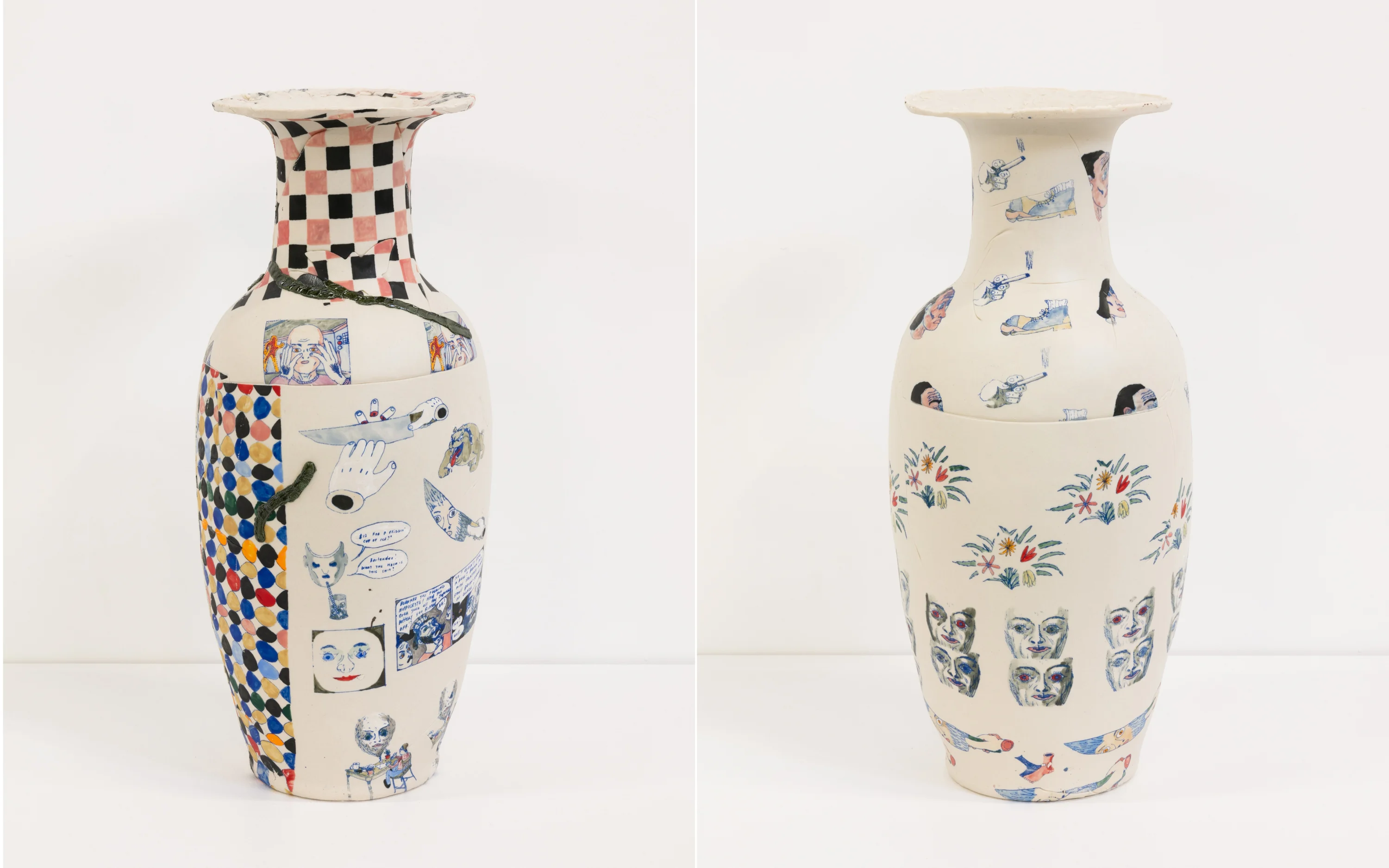
When you hear the term “ceramics,” you might think of vases depicting classic historical scenes or jugs decorated with floral arrangements, but Canadian artist Trevor Baird breaks – smashes, even – this mould. Traditionally a comic book artist, he covers his pots with extracts from the strips he’s painted. But there’s much more to it than that. Writer Bryony Quinn meets Trevor to talk through his stream of consciousness approach and where he feels he fits in the wider rhetoric of the craft.
Look at Trevor Baird’s ceramics – the vases in particular – and you know that they could only have been produced at this particular moment in time. Technically and aesthetically, they are a product of an era when digital and analog images and processes mingle in a post-internet, post-modern, post-tradition space where anything goes. All of that stuff gets embedded into the surface of Trevor’s ceramics when they are fired.
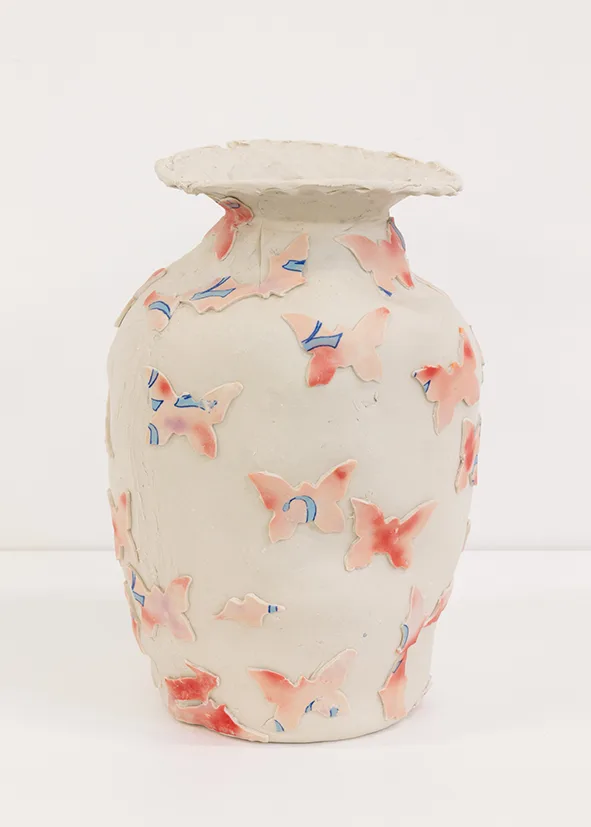
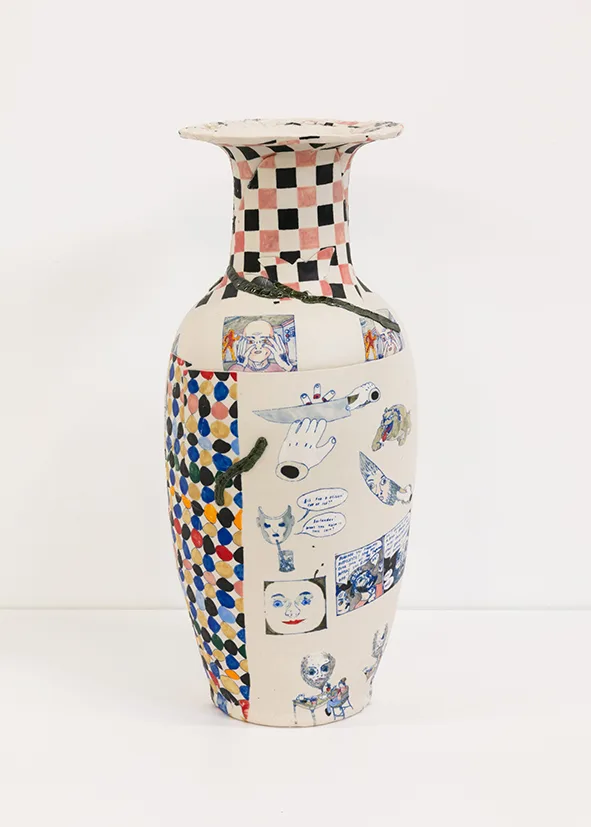
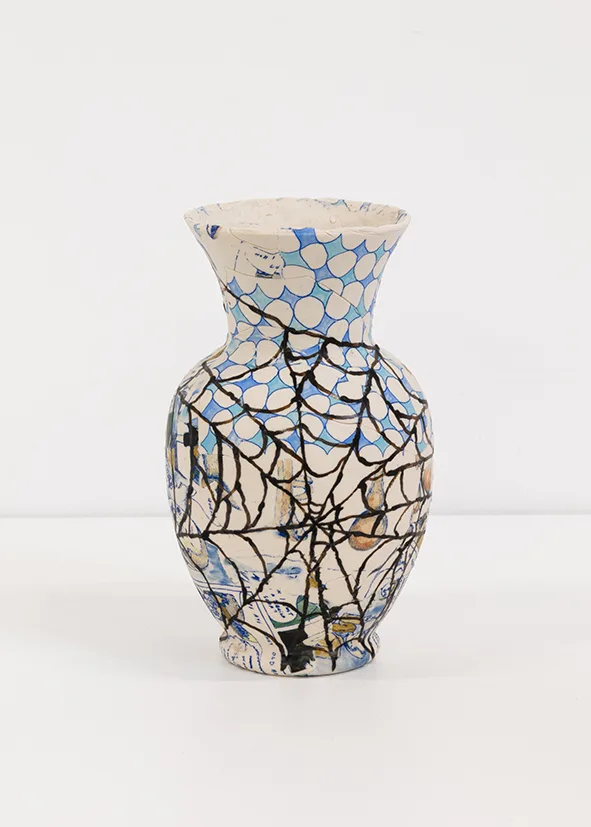
“Ceramics has always been a material that records action very easily,” the Montreal-based artist explains about his choice of the medium, “basically turning intimate gestures into stone.” That’s the special thing about working with clay. Much of what we know about ancient societies is often preserved in the fired forms that fill museum vitrines. Pots tend to outlast potters – sometimes by millennia. It seems appropriate to think about his work in this context as, at this very particular moment, we have no idea what a post-pandemic society will look like. So, what might an archaeologist from the future deduce about the person and the civilization that produced these works? “It depends if all the Marvel movies survive,” Trevor says, “then they’ll probably think the world was poisoned by comics.”
Ceramics has always been a material that records action very easily

His ceramics are covered in comics or, rather, odd bits of them, which are sometimes repeated in a nonsense narrative pattern. The frames sit next to painted and airbrushed textures, random drawn objects and scenes borrowed from everyday life and fantasy: “It’s all a stream of consciousness – doodling and drawing –which end up being an exploration of psychological themes, like paranoia or comic scenography,” he says. “I was interested in imagery solidified in a pot that was relevant to me.”
Each visual might be interpreted for its symbolic meaning – a rose, liquid pouring from a bucket, a hand holding a cigarette, an open window – but it’s the individual frames from comics or the figures drawn mid-action, like a cell from an animation, that suggest a narrative. It’s impossible to tell where the story starts or ends. The composition of these elements on each vase looks both accidental and purposeful – a cross between the responsive but haphazard grid of Google image search results and the sketch book pages of a chronic doodler.
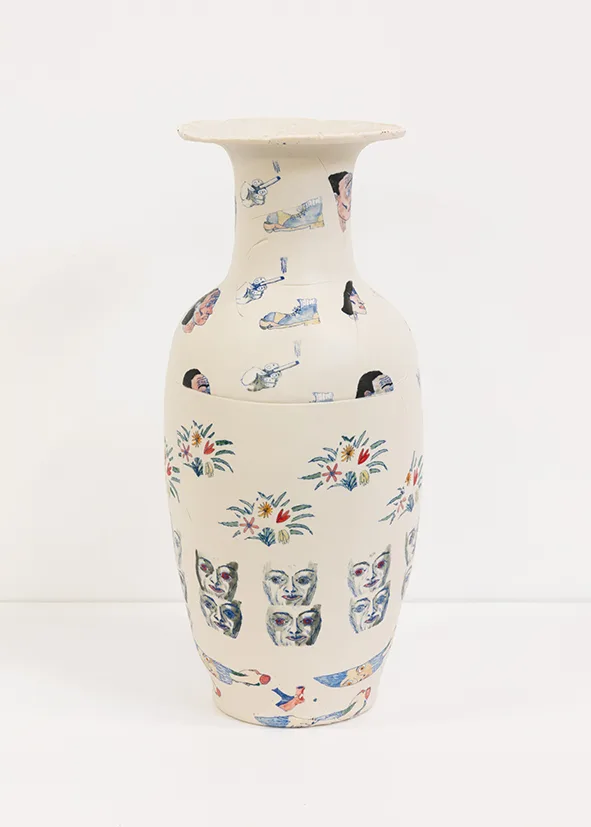
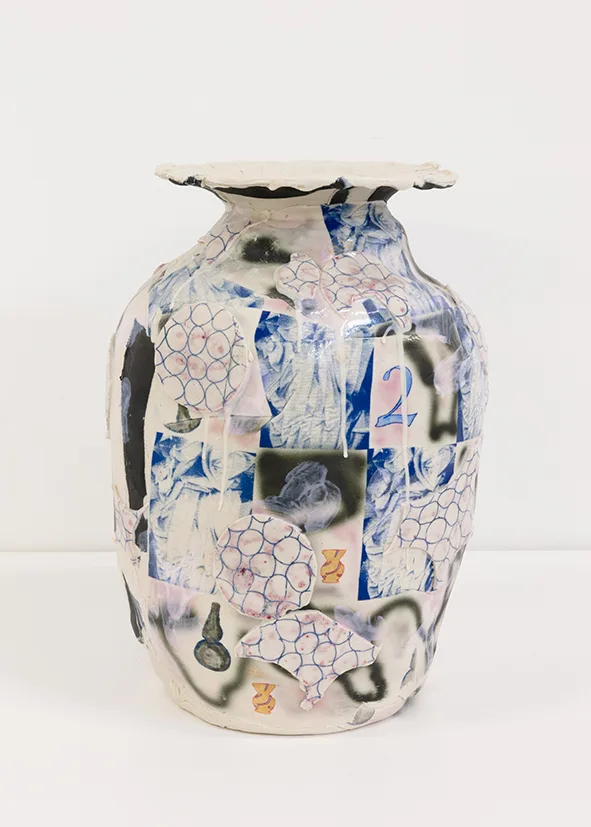
In general, it’s easier to describe the pots and their design using contemporary technical analogies than the traditional or folky terms ceramic art tends to evoke. “The process is very analog, but it keeps this air of computer editing,” Trevor explains, “which I find interesting for ceramics, and is very much based in these centuries-old processes.” It feels right then to liken a particular blue he uses to the bright blue of a hyperlink than to the blue of Delftware or Wedgwood. It’s “electric blue,” he helpfully clarified. On other vessels, bitmapped photographic images sit starkly against airbrushed textures as if lassoed and layered on Photoshop. It all looks very now. Fuck knows what the future will make of them.
Here’s what I know: At first, Trevor wanted to be a painter, then a printmaker, before realizing that he “hated the process.” Then he was broke. He made comics because they’re accessible but spent a year trying to publish a comic book. He developed a massive cache of drawings. “There’s so much work that goes into that is basically just garbage, like it just disappears because of a problem or something doesn’t fit.” So, he took elements from the pages of his comics that were great on their own but didn’t hold up the story, and he edited them together, “to create something new and to let these moments live on within their own space.” That space is made out of Trevor’s own “tweaked” recipe for clay and now he works in ceramics, making the strangest, coolest vases.

I was always convinced that if you’re working in a medium you should exploit the possibilities specific to that medium
“I was always convinced that if you’re working in a medium you should exploit the possibilities specific to that medium,” Trevor states and, effectively, he’s working in two – comics and ceramics. His process is impressive: After making a bed of fresh plaster, Trevor covers the surface with his tweaked porcelain slip. He then prints his drawings directly onto the surface, or otherwise paints and airbrushes decorative areas, paying special attention to how structural design of comics could become “something like a pattern” as he composes these elements.
The clay sheets are then manipulated to fit a mold, bending and tearing and “basically forcing the image to assume a sculptural form.” By breaking up the patterning and the random comics scenes, it’s up to the viewer to activate the story. “I’m interested in a kind of disrespect for the preciousness of what’s created, like spending two days painting an image and blindly contorting it to this new object.”

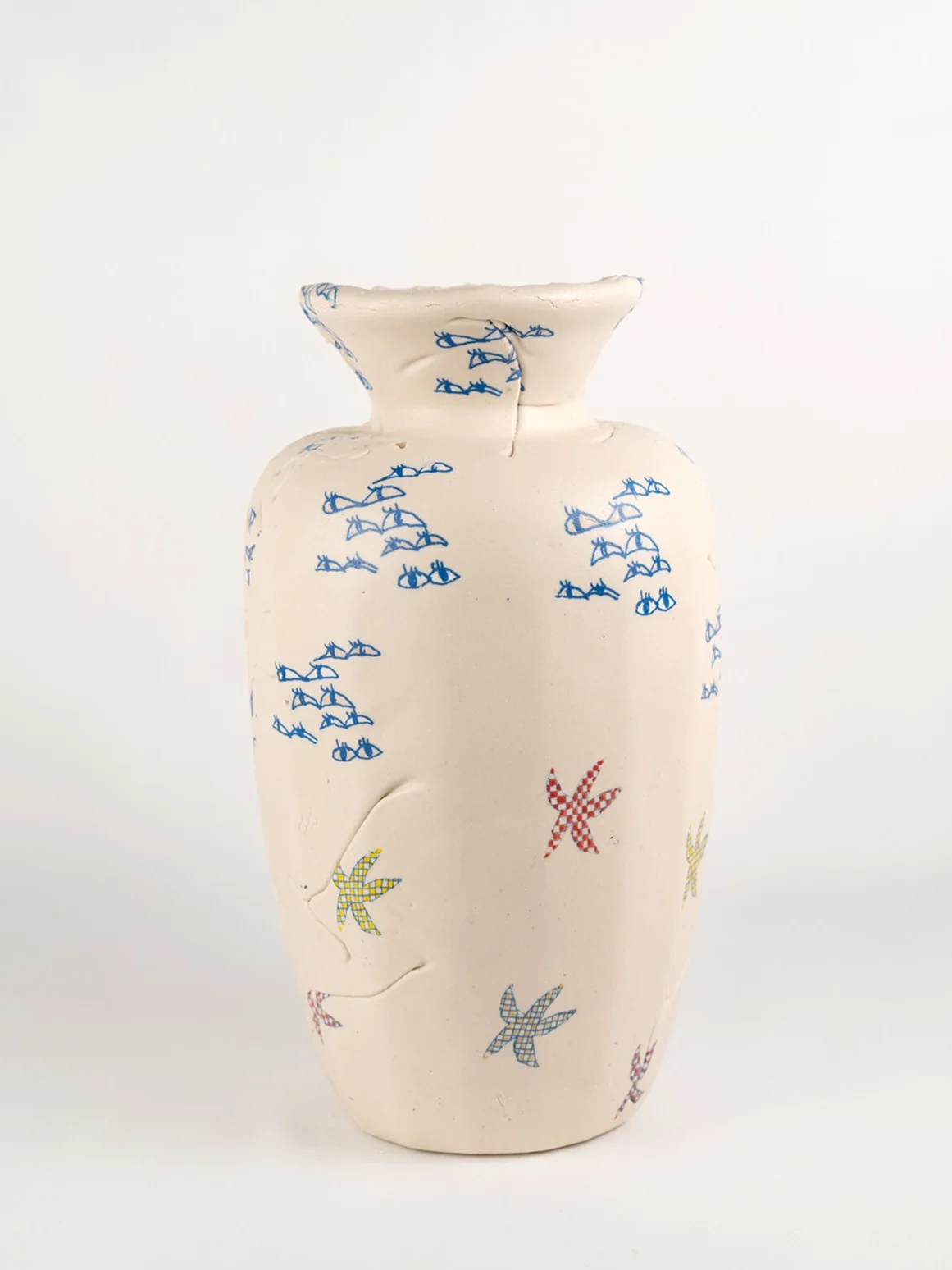
Trevor takes the “precious” rhetoric of ceramics and exploits that too. The labor and the precarity of making things that could collapse, explode or smash at a stage long before completion gives ceramics a certain status and value beyond their actual form or function, no matter how ubiquitous the results are. He found lamps and vases in thrift stores that fit the profile of “elegance,” but are essentially a bit crap, and he bastardized their forms by turning them into molds for his own work.
They are uncanny works and hard to characterize: they’re not exactly fine or functional; they’re not industrially produced, but they’re not wholly individual either. “I was always interested in things as disguises,” he comments, citing that bit in The Talented Mr Ripley when Tom Ripley wears Dickie Greenleaf’s ring and assumes a new personality and scope of feeling. “I grew up on a farm, in a trailer, so even if you had something nice it wouldn’t fit, you know? Like it was too shitty of a house to own something nice, so for me there was this impetus to create a world or an object or something that was a way into something else – a fake – to create the world around you.” The idea is, Trevor says, “to live through objects.”

